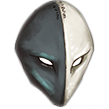
Fresh Produce [one-action] Feat 1Healing Impulse Kineticist Plant Primal Vitality Wood Source Rage of Elements pg. 34 2.0
You grow a nourishing nut, vegetable, seed, or fruit. Choose a creature in your kinetic aura. The produce grows in their open hand, or at their feet if they have no open hands. The produce has light Bulk. A creature can eat it with an Interact action to regain 1d4 + 1 HP; this is a healing vitality effect. The creature feels full for 10 minutes, during which it has resistance 2 to void damage and can't eat another piece of produce. Produce not consumed by the start of your next turn withers away.
Level (+2) The healing increases by 1d4+5, and the resistance increases by 2.
Level (+2) The healing increases by 1d4+5, and the resistance increases by 2.
Traits
Healing: A healing effect restores a creature’s body, typically by restoring Hit Points, but sometimes by removing diseases or other debilitating effects.
Impulse: The primary magical actions kineticists use are called impulses. You can use an impulse only if your kinetic aura is active and channeling that element, and only if you have a hand free to shape the elemental flow. The impulse trait means the action has the concentrate trait unless another ability changes this. If an impulse allows you to choose an element, you can choose any element you're channeling, and the impulse gains that element's trait.
Plant: Vegetable creatures have the plant trait. They are distinct from normal plants. Magical effects with this trait manipulate or conjure plants or plant matter in some way. Effects that manipulate plants have no effect in an area with no plants.
Primal: This magic comes from the primal tradition, connecting to the natural world and instinct. Anything with this trait is magical.
A creature with this trait is primarily constituted of or has a strong connection to primal magic.
Vitality: Effects with this trait heal living creatures with energy from the Forge of Creation, deal vitality energy damage to undead, or manipulate vitality energy.
These planes are awash with life energy. Colors are brighter, fires are hotter, noises are louder, and sensations are more intense. At the end of each round, an undead creature takes at least minor vitality environmental damage. In the strongest areas of a vitality plane, they could take moderate or even major vitality damage instead. While this might seem safe for living creatures, vitality planes present a different danger. Living creatures regain an amount of HP each round equal to the environmental damage undead take in the same area. If this would bring the living creature above their maximum HP, any excess becomes temporary HP. Unlike normal, these temporary HP combine with each other, and they last until the creature leaves the plane. If a creature’s temporary HP from a vitality plane ever exceeds its maximum HP, it explodes in a burst of overloaded vitality energy, spreading across the area to birth new souls.
Wood: Effects with the wood trait conjure or manipulate wood. Those that manipulate wood have no effect in an area without wood. Creatures with this trait consist primarily of wood or have a connection to magical wood.
These planes consist of trees and other flora latticed in organic patterns. Wood planes are often perfectly constructed to match their desired purpose or environment but aren’t usually outright hostile to visitors.
 Licenses
Sources
Licenses
Sources
 Contact Us
Contributors
Support the Archives
Maximize Menu
Contact Us
Contributors
Support the Archives
Maximize Menu
 Licenses
Sources
Licenses
Sources
 Contact Us
Contributors
Support the Archives
Contact Us
Contributors
Support the Archives









